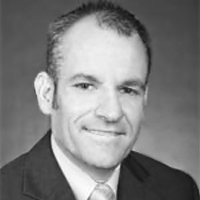Background
There has always been an awareness of sensory processing, but we have seen, with greater awareness, an increased acceptance of sensory processing in typical and atypical children. One of the reasons why we have seen more acceptance is that, within the diagnostic criteria of the autism spectrum disorders, they have included a hypo and hyper responsive sub-category of behaviors that falls under the stereotypical behavior. With that being added to the DSM-5, psychologists, speech language pathologists, physicians, et cetera, are much more aware and accepting of sensory processing as being not only a foundational physiological process that occurs at the cellular level, but also at the neurological level. We also have seen an increased demand for therapy services, resources, and intensive interventions.
If we look at the literature and look at specific OT-based journals, we have seen more research coming out related to the service delivery that is focused on different types of delivery, primarily intensive-based interventions. There have been consistent resources available, but the resources that are emerging are multimedia-based, and much more accessible to teachers, parents, and clinicians.
Existing research:
- Condition specific
- Behavioral management
- Delivery
However, what we see within the literature, as it relates to parent and teacher training (whether it be sensory processing, sensory processing disorders, and/or intervention approaches) is it is focused on conditions that are specific to a particular population. Thus within autism we see a lot of research related to parent and teacher education and training, but it is related to the condition of autism and what it looks like, or within Down's syndrome, et cetera. The other thing that we have seen is formal training that has occurred in management of behaviors. How they delineate out what those behaviors are, whether that is a behavior that is rooted in a specific antecedent, or if it is rooted in an underlying sensory processing difficulty, is missing in the literature. Then, how are things delivered. Parent and teacher education typically is done face to face. The literature suggests that there has been use of small groups in more recently delivery, so multimedia like VHS and DVD to multimedia that you log into and take courses. A good example of that is pivotal response training. That has been reviewed in the literature and being evaluated as as reasonable delivery model by way of parent and teacher education.
Delivery
Delivery Models:
- Face to face as part of a routine intervention (traditional)
- Multimedia
- Group based without children
- Group based with children
When we think of delivery of instruction, there are some different types of delivery. We, as therapists, typically use face to face, where it is a part of routine intervention. Kids come in, hopefully with their caregiver, and they get about 45 minutes of therapy and then you spend the last 10 minutes providing some instruction, education, or home programming. This is what we have typically done. You are able to adjust the type of instruction based upon what the caregiver or teacher needs, and you are able to do that in the moment and address things as they emerge, as being identified by either you or the caregiver with questions. One of the challenges is sometimes we do not see the caregiver. The child might come to therapy via transportation or another family member, or it may be a teacher and your interaction with the teacher is limited.
Another approach is multimedia. There might be a website that targets parents, teachers, and caregivers. The instruction could be a videotaped PowerPoint. You are providing content and a knowledge assessment at the end. This is nice because it is very flexible and affordable. Folks can do it whenever they want. The downside is in some cases you cannot curtail the instruction to the needs of the targeted learners. It ends up being very generic or foundational. It might be what the caregiver needs, but in a lot of cases a child might have specific sensory processing difficulties and behaviors, and this instruction might not meet those needs.
There are two other approaches: group based with children and group based without children. The first one is a focus group type delivery. We have the caregivers and the teachers in a classroom type setting. We have identified what their needs are, have the content, and can adjust the content based upon the questions that the teachers and caregivers have. It can be an easy way to adjust based upon the needs of the targeted learners. The other thing that can be valuable is there then emerges more of a support group type mentality as wel. Relationships can be developed, and they might carry on after the group, or if you are running the group with multiple iterations in a given year, you might see repeated caregivers come back, which is completely fine. One of the challenges is that you can have diverse learners where everybody is at a different level. Some folks might need very basic instruction, while others are ready for more. They want to have higher level content or strategies.
